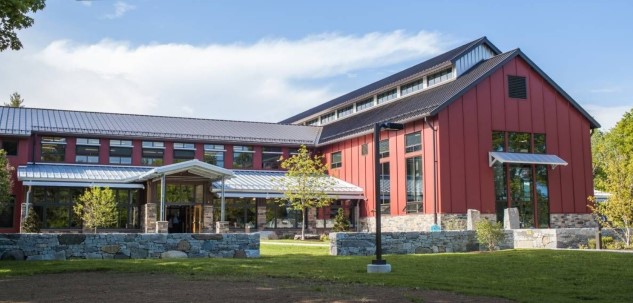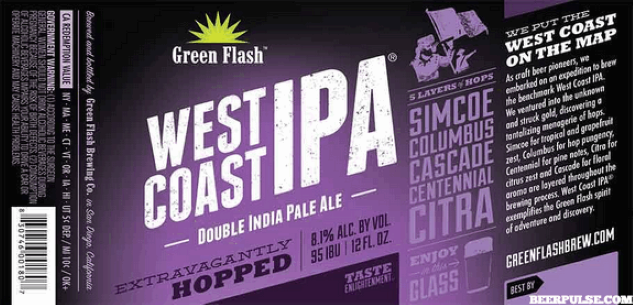Mendocino, Saratoga Brewing Co.’s Shutter Their Doors as Craft Beer Concerns Continue to Ferment
Photo via Smuttynose Brewing Co. Drink Features Mendocino Brewing
We wrote recently that “craft” beer was dead in 2018, a headline that wasn’t exactly understood by a large portion of the audience that didn’t bother to read beyond it. The point of that piece was a discussion of the word “craft” itself, an argument that it had lost most of its value in terms of a descriptor, at least as currently defined by the Brewers Association. It was never a piece about the actual health of the beer industry.
But with that said, there are indeed questions about the actual health of the industry as well, at least when talking about older breweries. We’ve reached a time when the changing of the guard has become not just symbolic, but economic. Businesses with 20 years or more of history and experience in craft beer are starting to shutter their doors, and they’re placing the blame squarely on their inability to evolve and compete against smaller, more nimble competitors on a local and regional level. For a lot of “legacy” breweries, the party is clearly coming to an end.
Two of the latest, currently making headlines, are California’s Mendocino Brewing Co. (open since 1983) and New York’s Saratoga Brewing Co., (since 1997) which was owned under the Mendocino banner. As of last weekend, both have abruptly closed. Mendocino’s woes at least partially stem from its ownership by majority shareholder Vijay Mallya, who bought the company in 1997, and is currently residing in London while fighting extradition to India on charges of fraud and money laundering. Their future is still uncertain, with one publication reporting that the company is still “in discussion with an investor to help rescue the company,” which sounds more than a little implausible.
Likewise brought down at the same time is Saratoga Brewing Co., also known as Olde Saratoga Brewing, of Saratoga Springs, NY. Its classic year-rounders will be missed by fans, but the impact of its sudden closure also extends further into the craft beer industry, as Saratoga had for years provided space and capacity for contract brewing to a variety of clients. One of those current clients, Braven Brewing of Brooklyn, NYC, was warned only 72 hours in advance that Saratoga was closing down, and the owners were then forced to travel hours and rent trucks in order to remove/reclaim all of their kegs and brewing equipment housed at Saratoga, as recounted on the Braven Instagram page.
One could at least argue that the closure of those two breweries have been primarily driven by association with a bad businessman, but these troubles also extend to companies where there are no such easy scapegoats. Look at New Hampshire’s Smuttynose Brewing Co., founded in 1994, a company that employs 68 people and brings in $10 million in revenue per year. Despite decades of growth and goodwill, including the well-received “Smuttlabs” line of experimental beers, Smuttynose will be sold at bank auction in March, a victim of overambitious expansion and increased local competition, as the number of breweries in the U.S. passed the 6,000 mark in 2017. Like Mendocino, Smuttynose is now hoping for a new owner to reinvest in the business and keep it running, although it is still in operation at the moment.
“The company’s financial models were based on 20 years of consistent growth but the explosion of microbreweries has led to changing dynamics in the marketplace,” said Smuttynose owner Pete Egelston to Seacoast Online. “This dramatic shift occurred just as Smuttynose committed to a major infrastructure investment with the construction of the new production facility. As the turmoil in the marketplace stabilizes, Smuttynose, a trusted brand with strong consumer loyalty, can regain its footing with a major infusion of capital.”
 Smuttynose’s beautiful brewery.
Smuttynose’s beautiful brewery.
And that’s just it—the one constant of these stories often seems to be that the now-legacy regional breweries of the ‘80s and ‘90s expected the craft brewing boom to continue unabated, gearing their companies around continuous expansion and new investment. When sales decline at all, or even simply level out, many seem ill-equipped to deal with any condition that isn’t yearly double-digit growth. It’s hard not to see a certain attitude of entitlement there, but also to empathize with it—when your business grows every year for 15 years or more, you probably expect it’s going to keep on growing.
Alas, this is no longer the case in 2018. The free ride is over—simply making good beer is by no means enough to get by and grow any more. After imparting the importance of “buying local” and small to consumers for so many years, older regional breweries are now being stung by those customers doing what they’ve been told to do—supporting a young local brewery down the block, rather than an old favorite from two states away.
Earlier this week, San Diego’s Green Flash Brewing Co. announced it was withdrawing its beer and its business from a whopping 33 U.S. states. After expanding production and building a second brewery in Virginia to make itself available in all 50 states and become a “national,” the company is now completely reorganizing to service only 17, while slashing its overall workforce by 15 percent. Their choice was one to focus on areas of strength, rather than regions of the country where it was increasingly hard to sell IPA against popular local competitors. And the challenges they face are by no means unique to them.

This is the reality of craft beer in 2018. As total beer consumption falls, and growth of the craft segment slows, coupled with the steady increase of more small breweries, there are fewer consumers out there for each and every business. A time is likely coming when more breweries will have to make a choice like the one made by Green Flash. Here’s hoping that we don’t lose any other classic brands.